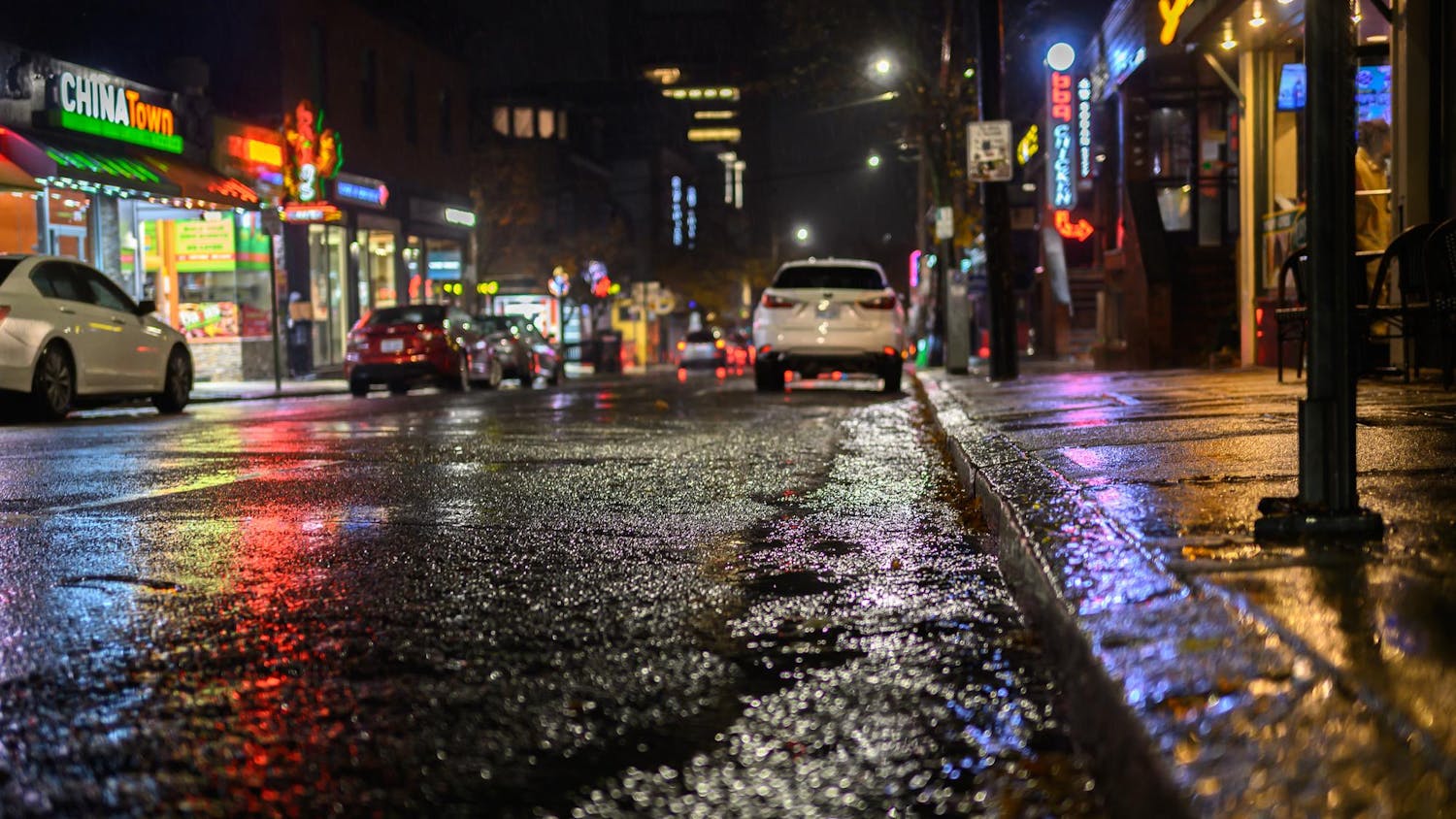Visitors to the Quiet Green can now view a new sculpture remembering and engaging with the University’s ties to the slave trade. President Christina Paxson dedicated the sculpture, entitled the Slavery Memorial, at a ceremony Saturday afternoon that drew more than 100 students, alums and community members.
The sculpture was a long time in the planning: It was installed this summer following a 2006 report by the Steering Committee on Slavery and Justice, which called for the University to recognize the contemporary implications of its past links to slavery and the slave trade and build a memorial that would “create a living site of memory, inviting reflection and fresh discovery without provoking paralysis or shame.”
The Public Art Committee selected Martin Puryear, a sculptor who won a MacArthur Fellowship and a Guggenheim Fellowship for Creative Arts, to create the piece.
In her remarks, Paxson applauded Puryear’s endeavors and thanked former President Ruth Simmons for calling for the formation of the steering committee and for taking on such an important issue. She praised the steering committee’s report, referring to the document as “a model of responsible scholarship” and “a very high standard for rigorous and unflinching analysis.”
“One of the most important parts of the slavery and justice report is its call to fight modern legacies of slavery,” Paxson said. “The memorial would be doing good work if it encourages passersby to reflect on the injustices of today as well as yesterday.”
The sculpture comprises a colossal iron ball that appears to be partly buried underground, with a broken chain attached to its top. A plaque beside the sculpture bears an inscription that reads in part, “This memorial recognizes Brown University’s connection to the trans-Atlantic slave trade and the work of Africans and African-Americans, enslaved and free, who helped build our university, Rhode Island and the nation.”
Anthony Bogues, director of the Center for the Study of Slavery and Justice, complimented the sculpture and said he hoped the piece inspired reflection and action. He urged attendees to heed the memorial’s visual call to remember both the enduring legacies of racism and slavery in the United States and modern forms of human trafficking around the globe.
Jo-Ann Conklin, director of the David Winton Bell Gallery and a member of the Public Art Committee, said the committee presented its vision to artists around the world, eventually selecting Puryear in 2012 for his “great thoughtfulness, great commitment and elegance.” Committee members chose the Quiet Green as a location because it was a highly visible space that was symbolically close to University Hall, she said, which was constructed in 1770 with the help of at least three slaves.
“The most effective memorials were those that were open to interpretations,” Conklin added.
Puryear said he decided to make the sculpture out of iron, instead of bronze, because he found bronze to be too “heroic” and not in keeping with the purpose of the memorial, which is in part to represent slavery as “an industrial reality.” He added that he intended to create an artifact that is “mostly buried, but will never disappear from memory.”
Next month, the Slavery and Justice Center will officially open at its new location at 94 Waterman St. The center plans to hold a series of exhibitions and lectures in the new space over the course of the year, including an Oct. 24 keynote lecture by Simmons, according to the center’s website.
Joey Sacks ’15, a member of the Student Coordinating Committee for the Center for Slavery and Justice, said the center would aim to provide a platform for further discussions and foster students’ and professors’ engagement in the issue of slavery.
Sacks said he admired the memorial’s design, adding that he hoped it would provoke ongoing and rigorous conversations.
ADVERTISEMENT




